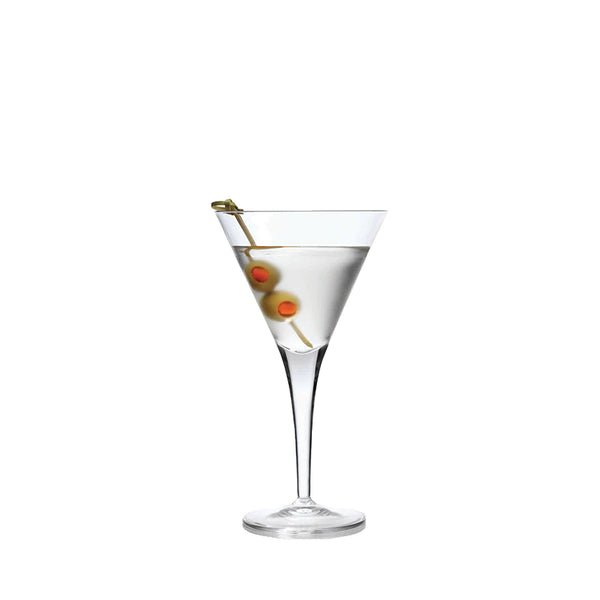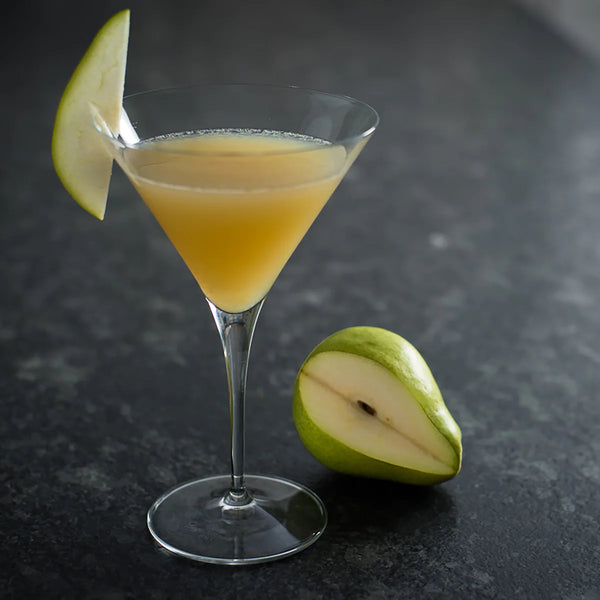Crafting a Perfect Martini
The martini cocktail has taken on various forms throughout its icy, refreshing existence. Numerous tales swirl around its origins. The archetypal Martini blends gin and vermouth - a spiced fortified wine - adorned with olive or a twist of lemon. It embodies the essence of American cocktail culture.
Many attribute its creation to bartender Jerry Thomas at San Francisco's Occidental Hotel in the 1860s. Others credit bartender Martini di Taggia at New York's Knickerbocker Hotel in 1911, presenting a blend of London dry gin and dry vermouth to tycoon John D. Rockefeller. However, recipes for the martini date back as early as 1862 in Jerry Thomas's Bartenders' Guide.
Some renditions of the Martini boast a stronger composition, with two parts or even up to five parts gin to one part vermouth, finished with an olive or lemon twist. A "dry" martini minimizes or entirely eliminates vermouth, spotlighting the gin.
The Martini's trajectory—its ascent, decline, and resurgence—reflects changing tastes and cultural shifts. During the opulent Gilded Age (1880-1900), the Martini soared in popularity, maintaining its allure well into the mid-20th century.
Even the Prohibition era in America (1920-1933) failed to dampen enthusiasm for the Martini, as backyard distillation made gin accessible.
However, in the 1960s, competing beverages like wine and beer caused a dip in the Martini's favor.
Yet, with the revival of retro trends in recent years, the Martini has staged a comeback. It is most renowned in popular culture today, notably as the signature drink of fictional British spy James Bond. The iconic phrase "shaken, not stirred" was immortalized by actor Sean Connery as Bond in the 1964 film Goldfinger, although Bond opts for vodka over gin.
Dirty Martini
The Dirty Martini combines either gin or vodka with dry vermouth and olive brine. Whether to use gin or vodka comes down to personal taste. Yet, while gin is often the default choice for a classic Martini, many prefer vodka for a Dirty Martini. The neutrality of vodka's profile lets the olive brine take center stage, unhindered by the bold botanicals in gin.
2.5 oz. gin or vodka
0.5 oz. dry vermouth
0.5 oz. olive brine
Garnish with olives
Add the ingredients into a shaker filled with ice. Shake for 15–20 seconds until well chilled. Double strain through a fine mesh strainer into a chilled cocktail glass. Garnish with a skewer of olives.

Michelangelo Masterpiece Glass
Gibson Martini
Countless methods exist to alter the classic Martini. Yet, one of the most exceptional variations stands out for its simplicity: the Gibson, which only requires a distinct garnish to set it apart, a pickled onion garnish.
While the precise origins of the Gibson remain in mystery, some speculate that it emerged from the creative genius of San Francisco entrepreneur Walter D.K. Gibson, possibly originating at the Bohemian Club in the late 1800s.
Pear Martini
The pear martini stands out among the Martini variations, offering a delightful fusion of pear vodka, citrus notes, and floral undertones, making it a refreshing and sophisticated choice for cocktail enthusiasts.
2 oz. Pear Vodka
0.5 oz. Elderflower Liqueur
1 oz. fresh lemon juice
0.5 oz. simple syrup
Garnish with sliced pear
Mix all ingredients in a cocktail shaker with a cup of ice or two large ice cubes. Shake for 15 seconds, then double strain into a chilled coupe glass. Finish by garnishing with pear slices before serving.

Lavender Martini
Served chilled and garnished with a sprig of fresh lavender or mint, this cocktail is both visually stunning (the color is captivating) and wonderfully fragrant.
2 oz. Gin
0.5 oz. Dry Vermouth
1 oz. Simple Lavender Syrup
0.5 oz. lemon juice
Garnish with fresh mint
Mix all ingredients in a cocktail shaker with a cup of ice or two large ice cubes. Strain into a chilled glass. Enjoy right away, garnished with mint.

Their versatility makes Martinis truly remarkable: equally suited for sophisticated soirées or leisurely afternoons lounging by the poolside. Despite its somewhat enigmatic origins, the Martini has undeniably maintained its timeless elegance and taste.
